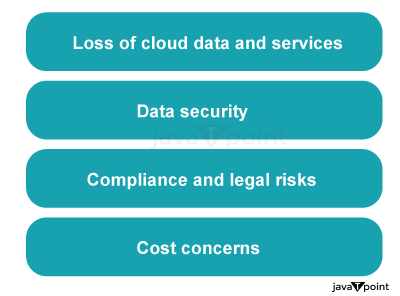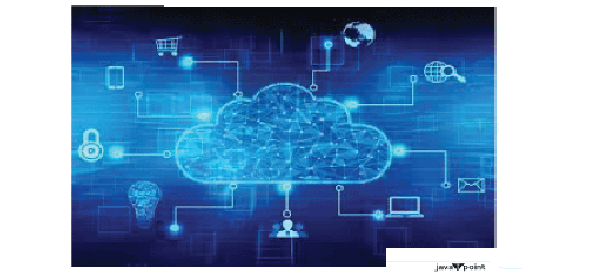What are the Security Risks of Cloud Computing
Cloud computing provides various advantages, such as improved collaboration, excellent accessibility, Mobility, Storage capacity, etc. But there are also security risks in cloud computing.
Security Challenges and Considerations in Cloud Computing

A key component of cloud computing is security. Despite the numerous precautions that cloud providers take to ensure the security of their infrastructure and services, there are still some security issues and factors that businesses need to be aware of.
- Compliance: Using cloud services may be subject to legal compliance regulations, depending on the industry. Organizations must make sure their cloud provider complies with these specifications and has access to the required paperwork.
- Data Loss: Data loss is the most common cloud security risk of cloud computing. It is also known as data leakage. Data loss is the process in which data is deleted, corrupted, and unreadable by a user, software, or application. In a cloud computing environment, data loss occurs when our sensitive data is in somebody else's hands, one or more data elements can not be utilized by the data owner, the hard disk is not working properly, and the software is not updated.
- Data Breach: It is the process in which confidential data is viewed, accessed, or stolen by a third party without any authorization, so the organization's data is hacked by hackers.
- Account Hijacking: It is a serious security risk in cloud computing. It is the process in which individual users' or organizations' cloud account (bank account, e-mail account, and social media account) is stolen by hackers. The hackers use the stolen account to perform unauthorized activities.
- Spectre & Meltdown: Spectre & Meltdown allows programs to view and steal data that is currently processed on the computer. It can run on personal computers, mobile devices, and in the cloud. It can store the password, and your personal information, such as images, e-mails, and business documents, in the memory of other running programs.
- Increased Complexity Strains IT Staff: Migrating, integrating, and operating the cloud services is complex for the IT staff. IT staff must require the extra capability and skills to manage, integrate, and maintain the data in the cloud.
- Data Security and Privacy: The security of sensitive data is one of the main issues with cloud computing. Access controls must be in place to restrict who can access the data, and organizations must make sure that their data is encrypted both in transit and at rest.
- Vendor Lock-In: Switching cloud providers can be expensive and complex, which might result in vendor lock-in. When choosing a cloud provider, businesses should take this into account and make sure they have a plan in place in case switching providers becomes essential.
- DDoS: Cloud service companies are a prime target for distributed denial of service (DDoS) attacks, which can cause downtime and data loss. Organizations should verify that the cloud provider has sufficient defenses against DDoS assaults in place.
- Identity and Access Management: The security of cloud computing environments depends on effective identity and access management. To prevent unauthorized access to their data, organizations must make sure that they have robust authentication and authorization mechanisms in place.
- Monitoring and Logging: Monitoring and logging services are frequently offered by cloud providers. These services can assist organizations in identifying and addressing security concerns. However, businesses must make sure they have the systems and procedures in place to analyze the data and take appropriate action.
- Shared Infrastructure: Cloud service providers frequently employ this type of setup, which allows several businesses to use the same hardware and software resources. Organizations should make sure their cloud provider has proper isolation mechanisms in place because this could result in security issues like cross-tenant attacks.
In general, businesses should adopt a proactive approach to cloud security and put the required security policies in place to safeguard their infrastructure and data.
Identity and Access Management (IAM) in Cloud Environments:
IAM, or identity and access management, is an essential part of cloud security. It is the process of managing digital identities and restricting access to cloud-based resources and apps.
By managing user authentication and authorization across their cloud infrastructure, organizations can make sure that only authorized users have access to important data and apps.
IAM Systems Frequently Contain the Following Elements:
- Authorization: The process of allowing or prohibiting access to particular programs or resources based on a user's role, permissions, and other considerations.
- Audit Logging: It is the practice of documenting and observing user behavior in order to identify and address potential security risks.
- User Authentication is the procedure of confirming a user's identification using credentials, such as a username and password or multifactor authentication.
- Role-Based Access Control: A security paradigm known as Role-Based Access Control (RBAC) grants authorization to particular roles within an organization rather than to individual individuals.
- Identity Federation: The capacity to authenticate users across many systems and services using a single set of credentials.
IAM is necessary to preserve the privacy, accuracy, and accessibility of data and applications in the cloud. Unauthorized users could access sensitive data without the right IAM protections, resulting in data breaches and other security concerns.
Data Privacy, Compliance, and Regulatory Considerations
Significant issues in cloud computing include data privacy, compliance, and regulatory constraints. Here are some crucial details:
- Regulations: The laws and regulations governing data privacy, data security, and data sovereignty vary considerably between nations. Businesses must make sure they are adhering to all pertinent rules and regulations.
- Security Measures Adopted by Cloud Service Providers: To safeguard client data, cloud companies are required to implement a number of security measures, including encryption, access limits, and intrusion detection. Customers must assess these actions to make sure they satisfy their needs.
- Data Privacy: Transferring data to a third party supplier is necessary for cloud computing. Customers must confirm that the handling of their data complies with all relevant data privacy laws and regulations.
- Compliance: Depending on the type of data they process, cloud service providers may need to adhere to a variety of legal regulations, including HIPAA, PCI DSS, GDPR, and others.
- Shared Responsibility Model: Both the customer and the cloud service provider share responsibilities for cloud security. Customers must be aware of the shared responsibility model and make sure they are protecting their data in accordance with the necessary standards.
- Disaster Recovery and Business Continuity Planning: In order to be able to recover from a security incident or outage in the cloud, customers must have disaster recovery and business continuity plans in place.
- Security Audits: To find vulnerabilities and confirm compliance with rules and security best practices, customers must regularly audit the security of their cloud infrastructure.
To protect data in the cloud, it is crucial to install suitable security measures and understand the regulatory environment.
Best Practices for Securing Cloud Environments and Data

In order to safeguard sensitive data and keep consumers' trust, organizations must secure cloud environments and data.
The following are some top recommendations for protecting cloud environments and data:
- Implement Robust Access Controls: To guarantee that only authorized users have access to the cloud environment, implement robust identity and access management (IAM) restrictions.
- Monitoring and Logging All Activity is necessary to quickly identify and address security incidents in the cloud environment.
- Update and Patch Systems on a Regular Basis: To stop known vulnerabilities from being exploited, keep all systems and software up to date with the most recent security patches and updates.
- Select a Dependable Cloud Provider: Opt for a cloud provider with a solid track record for compliance and security and strong security measures.
- Use Encryption to Safeguard Sensitive Data both in transit and at rest. Both when storing it and when sending it between systems, data should be encrypted.
- Conduct Routine Security Audits: To find and fix any vulnerabilities or flaws in the cloud environment, perform routine security audits.
- Employee Security Best Practices Training: All staff members should receive training on security best practices such as password management, phishing avoidance, and social engineering knowledge.
- Use Network Segmentation: To reduce the effect of security incidents and stop attackers from moving laterally within the network, use network segmentation.
- Create an Incident Response Strategy: To respond to security issues promptly and efficiently, create and frequently test an incident response plan.
Organizations may improve the security of their cloud environments and safeguard their sensitive data from online threats by putting these recommended practices into practice.
|


 For Videos Join Our Youtube Channel: Join Now
For Videos Join Our Youtube Channel: Join Now










